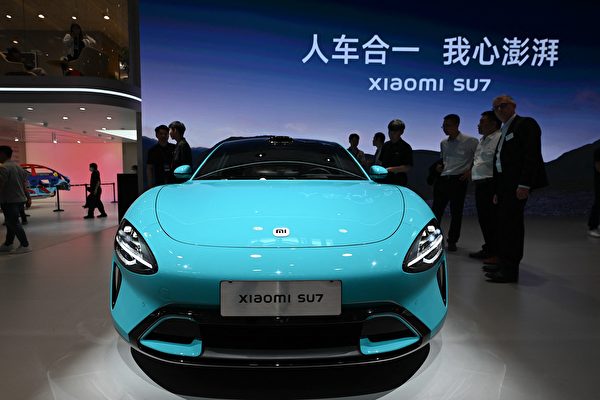Xiaomi Group Chairman Lei Jun declared at the investor conference on June 3 that he opposes the “internal competition” and “price wars” in the automotive industry, and denied rumors about the pricing of the Xiaomi SU7. According to the latest financial report of Xiaomi Automotive, the company incurred a loss of 500 million yuan in the first quarter of this year, averaging a loss of 6,590 yuan per car.
As a new force in car manufacturing, Xiaomi Automotive faces significant financial challenges in the market competition. According to Xiaomi Group’s financial report for the first quarter of 2025, its smart electric vehicle and AI innovation business division recorded revenue of 18.6 billion yuan, with the electric vehicle business contributing 18.1 billion yuan. However, this division operated at a loss of 500 million yuan.
Although the loss compared to the 700 million yuan loss in the fourth quarter of last year has narrowed, based on a rough estimate of delivery volume of 75,869 Xiaomi SU7 in the first quarter, the loss per Xiaomi SU7 amounts to as much as 6,590 yuan.
Looking at a longer timeline, the loss situation of Xiaomi Automotive becomes more severe. Xiaomi Group’s 2024 financial report shows that Xiaomi Automotive had a net loss as high as 6.2 billion yuan last year.
Despite delivering approximately 136,900 units of Xiaomi SU7 in 2024 and having a total order volume exceeding 248,000 units, based on calculations from the 2024 semi-annual report by QiDian News, the per-car loss even exceeded 60,000 yuan.
Furthermore, media under 36Kr, “PowerOn,” previously revealed that Xiaomi Automotive internally prepares for losses for over five years, highlighting its financial pressure under the strategy of “volume in exchange for price.”
Lei Jun disclosed at the Xiaomi investor conference on June 3 that the loss in Xiaomi’s automotive business is gradually narrowing, and the entire sector is expected to achieve profitability in the third to fourth quarter of this year.
Not only facing financial pressure, Xiaomi Automotive is also embroiled in multiple controversies. In March of this year, the “Xiaomi SU7 combustion incident” sparked public outcry, followed by criticisms of the SU7 Ultra for false advertising involving the carbon fiber dual-channel front hood, which led to dissatisfaction among potential car owners.
The losses of Xiaomi Automotive are not isolated cases but rather a microcosm of the intense “price wars” currently happening in the Chinese automotive industry. In April of this year, the Xiaomi SU7 series delivered over 28,000 units, ranking as the sales champion among vehicles priced above 200,000 yuan. However, the overall industry profit level continues to decline. Head car manufacturers such as BYD, Geely, and Chery drastically reduced prices, further intensifying competition.
Wei Jianjun, Chairman of Great Wall Motors, recently revealed industry hidden rules like “zero-kilometer used cars” and pointed out that numerous second-hand car trading platforms and thousands of merchants are suspected of falsifying sales data.
On June 3, the China Council for the Promotion of International Trade Automotive Dealers Association issued a proposal opposing “internal competition” and disorderly “price wars.”
Data from the China Automobile Dealers Association shows that the inventory alert index is as high as 59.8%, and some brands have inventory turnover ratios exceeding two months.
Under the dual pressures of supply and demand imbalance and the transition to new energy, end prices are falling, exacerbating liquidity risks for dealers.
Dealers are facing the dilemma of “selling more but losing more.” The 2024 China Automobile Distribution Survey report shows that dealer profit margins are only 39.3%, while the loss ratio reaches as high as 41.7%, making the industry consolidation trend increasingly apparent.

